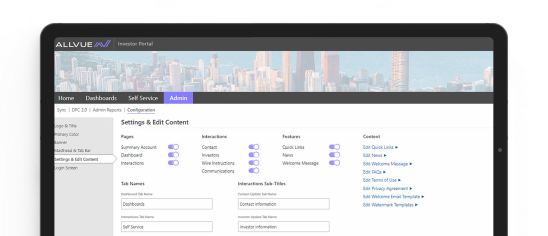
By: Michelle Wu
Head of Marketing
September 9, 2024
Private equity (PE) is a type of alternative investment that offers the potential for substantial rewards. Investors who provide venture capital to early-stage companies, for example, stand to reap significant profits if the company succeeds. Likewise, investors who allocate capital to private equity firms for leveraged buyouts, get a huge return on investment if the PE strategy succeeds.
Risk comes in various forms for private equity investors including market risk, regulatory risk, cybersecurity risk, concentration and diversification risk, liquidity risk and funding risk., Understanding how to mitigate them and the role data plays in risk mitigation is crucial for all players in the private equity space.
Below, we’ll examine the most significant risks in private equity and explore some effective methods for mitigating and managing them.
Types of private equity risks
Funding risk
Also referred to as commitment or default risk, this is the risk that the investors in a private equity fund, i.e. the limited partners (LPs) won’t be able to honor their capital commitments. It also refers to the uncertainty of whether a private equity fund can secure and maintain the necessary capital for investments.
Private equity funds typically don’t require full capital from investors upfront. Instead, capital is called in as and when suitable investment opportunities arise or are identified by the fund’s general partners (GPs) through special events called capital calls. The unpredictable timing of capital calls presents a significant risk to investors.
Since LPs’ capital commitments are contractually binding, failure to honor a capital call can result in severe consequences, including the forfeiture of their entire investment, including all capital already contributed to the fund. Moreover, the default of one or more investors can negatively impact all other investors in the fund.
As such, investors must maintain sufficient liquidity to be able to honor the capital calls. In some cases, investors might be compelled to liquidate other illiquid assets in the secondary market—often at a significant discount—to meet these capital commitments.
The inability to raise the required capital can have several detrimental effects on the fund itself, including disrupting the operations of existing portfolio companies or causing the private equity fund to miss out on strategic investment opportunities.
Mitigating funding risk
Private equity funds can employ several strategies to bolster financial resilience and ensure a steady flow of capital.
One strategy is maintaining sufficient capital reserves by retaining profits from successful exits or strategically withholding distributions from current investments. Capital reserves provide private equity funds with financial flexibility, acting as a buffer that can help them cover unforeseen expenses, meet capital calls, or seize new investment opportunities as they arise.
Diversifying funding sources offers another solid way to manage funding risks. Private equity funds should seek to partner with a diverse range of LPs instead of just one type, including institutional investors such as pension funds and insurance companies, high-net-worth individuals, and sovereign wealth funds. Broadening the base of capital providers reduces a fund’s dependence on any single investor or group of investors, thereby lowering overall default risk.
Yet another way to mitigate funding risk is to build and maintain strong relationships with limited partners. For example, regular and transparent communication and deploying an investor portal fosters trust and confidence among LPs, increasing the likelihood of successful fundraising efforts and long-term funding commitments from them.
For investors, mitigating funding risk involves making prudent decisions regarding fund commitments. If you have limited access to external capital, or if your other investments are tied up in illiquid assets, it may be wise to commit a smaller amount to new private equity investments. This cautious approach helps ensure that you can meet capital calls without undue financial strain.

Liquidity risk
Liquidity risk refers to the difficulties or challenges linked with converting private equity investments into cash or exiting investments within a desired timeframe.
Unlike publicly traded securities, private equity investments are illiquid. That means one cannot sell them without significant delay or loss of value. Indeed, most limited partnership structures are typically set up for long-term horizons, often spanning 10 years or more, with no redemption rights for investors during this period.
LPs seeking to sell their fund interests early may have to do so in a secondary market, often at a significant discount depending on market conditions.
Managing liquidity risks
There are several strategies that PE funds can employ to improve liquidity risk.
One effective strategy is staggering investment maturities. This involves carefully planning the timeline of investments to ensure that not all assets are locked up for extended periods. Diversifying the maturity dates of investments helps create a balanced portfolio that can provide liquidity at different strategies of the investment cycle.
We mentioned secondary markets earlier. While they may not always offer optimal pricing, they still provide an important option for generating liquidity when needed.
Implementing flexible fund structures and portfolio monitoring can also help mitigate liquidity risks. For example, some funds include provisions that allow for periodic liquidity events, where investors can redeem part of their investments at specific intervals. This can provide important ongoing liquidity to investors. Portfolio monitoring also helps firms to keep tabs on fund concentration and available fund capital.
Capital risk
Capital risk in private equity refers to the potential loss of invested capital in a private equity portfolio over its lifetime.
Economic downturns, shifts in market conditions, and unexpected challenges within a portfolio company can lead to substantial reductions in an investment’s value or, in extreme cases, a complete loss of capital.
Moreover, this risk can also result from the inefficiency or poor performance of fund managers. After all, fund managers play a crucial role in the success of private equity investments, from the selection of portfolio companies to the execution of value-creation strategies. If the managers can’t identify high-potential investments or if they fail to effectively manage and grow portfolio companies, it may negatively impact the overall returns on investment, with the worst outcome being a total loss of capital.
Managing capital risk
Thorough due diligence is a PE fund’s first line of defense against capital risk. That means thoroughly analyzing target companies’ financial health, market position, competitive landscape, and management to identify potential risks or red flags that could impact the investment’s performance. By carefully evaluating each investment, PE funds can make informed decisions to minimize the likelihood of capital loss.
Another helpful tool for managing capital risk is diversification. More specifically, spreading investments across various industries, geographies and asset classes reduces PE funds’ exposure to any one single risk factor. In essence, diversification helps spread risk, ensuring that poor performance in one area does not disproportionately impact the entire investment portfolio.
Ongoing performance monitoring and regular valuations are vital for managing capital risk. By continuously assessing the performance of portfolio companies, PE funds can detect early signs of trouble and take corrective action as needed. Regular valuations provide up-to-date insights into each investment’s worth, enabling funds to make informed decisions about whether to hold, exit, or adjust their strategies to optimize outcomes for investors. Portfolio monitoring and fund finance software can help to normalize disparate data, track LP exposures, and achieve transparency into deal workflows as well as capital commitments.
Other considerations
In addition to the above risks, there are several other factors that can significantly impact the success of private equity investments, and which private equity investors must therefore consider.
Management fees
Private equity funds typically charge management fees as a percentage of the committed capital or assets under management. These fees cover operational costs such as salaries, administrative expenses, and other overhead.
However, because these fees are deducted from the investors’ capital, they can significantly reduce the net returns, especially if the fund underperforms.
LPs must carefully evaluate the fee structures when selecting private equity funds to understand the true cost of their investment. They should then evaluate the services provided to determine the fairness and reasonableness of these fees and, therefore, whether they are actually getting value for money.
In some cases, investors may be able to negotiate more favorable terms, particularly if they are committing a large amount of capital or investing in multiple funds managed by the same firm.
High minimums
Private equity investments often come with high minimum investment requirements, sometimes reaching as much as $25 million. These high minimums are designed to attract institutional investors, who can commit large sums of capital
Unfortunately, for individual investors, these minimums can limit access to private equity opportunities, effectively excluding those who cannot meet the entry threshold. Additionally, the high capital commitment required by private equity funds means that investors must be comfortable locking up substantial amounts of their money.
The good news is that there are funds that offer much lower minimums — some as low as $25,000. This can be a good option for cautious investors who want to gain exposure to private equity without committing a large amount of capital.
Conclusion
All investments carry inherent risks, and private equity is no exception. Some of the most common risks in this space are funding risk, liquidity risk, and capital risk.
However, as we’ve seen, these risks can be proactively managed and mitigated using strategies like maintaining capital reserves, diversifying portfolios, conducting thorough due diligence, and fostering strong investor relations. Strong data management, reporting, and leveraging technology to support investor transparency can also help support risk mitigation efforts. Through these measures, PE funds can enhance their decision-making, protect investor capital, and ultimately optimize portfolio performance.
Allvue’s portfolio monitoring software and investor portal are just a few of the key capabilities that enable firms to support proactive risk management by offering real-time visibility into a fund’s portfolio companies and provide transparency to investors. With Allvue, you can track key performance indicators and metrics, and communicate seamlessly with investors.
Contact Allvue Systems today to learn more about how we can strengthen your fund’s risk management capabilities.
Sources
Private Equity Wire. The consequences of LP defaults due to capital calls. https://www.privateequitywire.co.uk/consequences-lp-defaults-due-capital-calls/
Harvard Business School. How to get into private equity. https://online.hbs.edu/blog/post/how-to-get-into-private-equity
Investopedia. Private Equity Management Fees and Regulations. https://www.investopedia.com/articles/investing/072115/private-equity-management-fees-regulation.asp
More About The Author

Michelle Wu
Head of Marketing
Michelle is a dynamic marketing leader with 15+ years of experience in capital markets, fintech, and cybersecurity technology industries. Prior to joining Allvue, Michelle was the Vice President of Product Marketing at SecurityScorecard, a global leader in cybersecurity ratings, and was the Head of Security & Compliance Marketing at Box. Before moving into cybersecurity, she led the Banking & Securities GTM strategy at Intralinks and covered capital markets clients at HSBC. She holds an MSc in Media & Communications from the London School of Economics and a BS in Marketing & Finance from NYU Stern School of Business.



